What web designers can learn from Disney
We speak to Twitter-ruling designer Rogie King about what he's learned from the House of Mouse and more.
Rogie King's is a divided existence: living in Montana's wilderness with a segment of his heart forever in big-city tech-land; balancing his output between the emotional flow of illustration and the more cerebral possibilities of design. We were thrilled to spend some time unpicking contradictions with him.
Let's start with an easy one: why don't you introduce yourself?
I'm Rogie King, a designer, frontend developer and co-founder of NeonMob and and illustrator in Helena, Montana. Yes, it's nearly the armpit of technology, but it's got a heckuva view and some awesome hunting and river floating… and dang good microbrews to boot.
What are your proudest, or most notorious, professional achievements?
Design work on neonmob.com as well as designing the desktop app, Fantastical. Other proud work I'd list is any growth in character design and illustration: I've been spending a lot of time in the sketchpad.
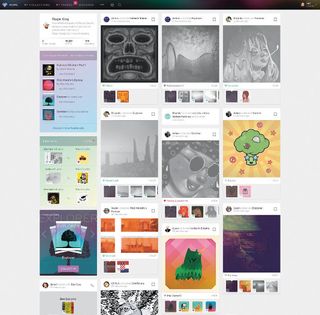
How does your average day look?
I work from home, so it's a ton of babies crying, getting the kids off to school, then into the saddle for design work for NeonMob. Life on the edge ain't easy, y'know… a comfy seat, some stout brew and dubstep/electronica all day long. In the evenings I've been breaking out the Cintiq and sketching characters.
Is it true that Disney sparked your interest in design?
In part. Computer science and programming opened my eyes to the web; that got me interested in Flash, which got me into the web and design. Disney has always been an inspiration in everything I do: his commitment to quality, theme, environment and storytelling. You can't go wrong with that any day doing anything.
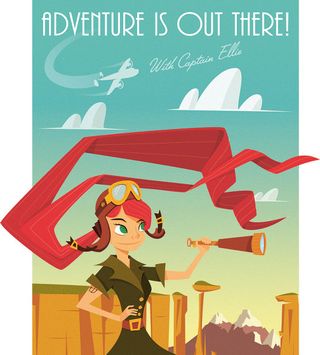
Disney said: "Times and conditions change so rapidly we must keep our aim constantly focused on the future." Is this sentiment applicable to the web today?
It was applicable 10 years ago (when I started) and is easily applicable today. The web is this insane ocean, ebbing and flowing all the time. If you're gonna work in this environment, you have to have this insatiable appetite and curiosity, which I know Walt Disney was a huge fan of.
Again, Disney said: "I never called my work an 'art'. It's part of the business of building entertainment." Are you making art, or working in a business?
Working in a business: we're telling stories, and letting people tell their stories using NeonMob. But we're in the business of building entertainment, much like Disney. We're attempting to create a platform of enjoyment and thrill: hunting and collecting limited edition digital art.
Designers shouldn't ever think they're purely making art or aesthetics. You're problem solving, and attempting to make tasks easier through familiar patterns, intuitive experience, and invoking emotions in their operators.
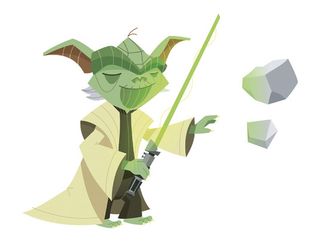
Was there a moment when you weighed illustration against code, and decided the pen is mightier – or more fun – than the keyboard?
It goes back and forth. I find at times when my brain is burnt out programming, I crave the raw, emotional expression in illustration and art. Too much of that side, and I bounce back to wanting to build things. While art and illustration is amazing in that it can generate and invoke an emotional response, I just can't get away from how cool it is to be able to build your own machines with your own hands.
The web seems to be made in either the West Coast, or in New York. How do you cope with life in Helena, Montana?
I miss interaction with all the nerds. I love hitting the big city and chilling with like-minded designers and illustrators. But sometimes it's amazing to go fishing or floating, far from technology. Like the art/code, I find my life enjoys the balance.
Do you feel where you live has an effect on your creativity?
Yeah, I think it does. Lots of clients value a balanced life. Like employers, they can see if you're headed for burnout: working the day shift, working the night shift. I get sad when I see people doing that: it's like they're missing out on life all for the hustle.
I value hard work, but it's not all about chasing notoriety and Benjamins. So, yeah, a lot of clients see it as a benefit. I've had on multiple occasions clients call out the fact that I'm not in the middle of the tech-sector as a good thing.
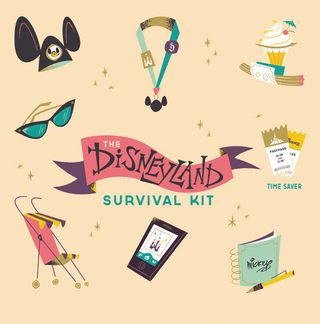
Working for NeonMob, it tends to be a lot more work being remote, especially since the entire team is based in San Francisco and I am the only person out here.
Collaborating tends to be a bit tougher working with bad connections, the lack of real human connection, different timezones and such. However, the solitude of not being surrounded by people all the time can really help that spark of creativity. Sometimes too much stimulation isn't the greatest for encouraging creativity.
You've a lot of Twitter followers. Do you think pursuing a high score in the social stats game can distract designers?
Absolutely: people feel that when they reach a large amount of followers, they've reached a holy grail, only to find out that the scenery looks about the same. There seems to be a distraction with catering your designs or your thoughts to the mob mentality – it's tougher going against the flow than with it. Less social following reduces that pressure to conform, which frees up creativity and distractions.
I'm thankful to have the exposure I do – it's enabled me to better provide for my family or promote others – but I'm not sure it's helped in other areas of my life.
Looking across the wider creative world, whose work makes you go 'wow'?
I've gained respect for the unnamed people who are making amazingly smart decisions, but aren't seen for it. Like engineers behind Facebook that are scaling all that data. That's insane genius. I don't know them, but I salute them.
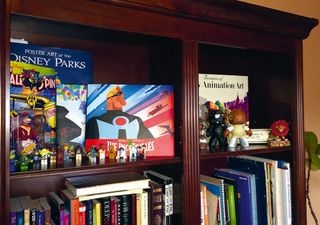
Regarding art, Brittany Lee of Disney films does incredible character design, Lou Romano of Pixar does genius stuff with colour, light and theme. Olly Moss is another artist who's always pushing out jaw-dropping art. Other notables in the art/character space are Cory Loftis, Elsa Chang and Mingjue Helen Chen.
In the illustration world, Lab Partners has this incredible, minimal, retro style that I love.
Can you tell us something about the projects you're involved in?
NeonMob is my full-time passion right now. It's where I dump most of my time and effort. Much in the same way you collected baseball or Pokémon cards as a kid, NeonMob is a place to collect digital art online.
It's got a lot of the same things you remember from physical collectibles: limited editions; rarities; the thrill of pulling a really hard-to-find collectible. You build your collection of art sets by claiming daily freebies or trading with community members. It's a blast to use and a blast to work on.
Fine Goods is my online shoppe: a storefront for any goods I might produce, be it a fun shirt, piece of art or something digital for the developers and designers.
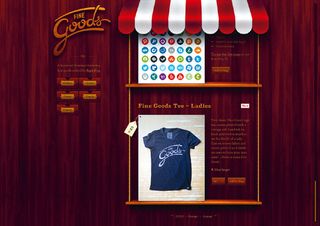
What about Future 52? And why are 52-things-a-year projects so popular?
Future 52 is a collaborative online narrative set in the year 2297 (read more here), that tells a story through the art contributions of 52 different pieces of art, submitted by really talented folk.
It's the brainchild of Alex Griendling – same awesome fella behind Raygun52 – a pixel artist and illustrator. I offered to help Alex make the site because I loved the idea and he needed a developer.
A week is a perfect span of time to release posts/art on. It's not too hard to keep up in this crazy-paced world, but gives you enough time to get excited and crave that next release. Also, themed, collaborative art projects seem to be really popular. It gives budding, talented artists a place to shine and throws a bit of traffic their way. Keep an eye out for more like this from me.
What advice would you give a young designer looking to start out?
Two things are super-important: curiosity and feedback. Curious designers are the ones that won't let it sit. They're always wanting to try one more thing. Curiosity is the fuel for an internal engine that enables growth.
Design is a process, not a single mockup. It takes time, conversations, pushback and lots of critique. Sometimes gorgeous designs fail when you start using them. It's so important to surround yourself with people who can make you smarter; push your designs to be better.
Oh, and humility. When you are young, you get hurt when someone critiques your design. Embrace the critique.
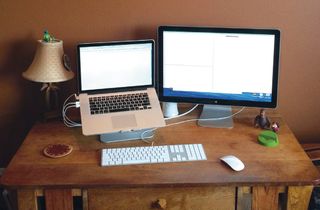
And how can you banish self-doubt?
Keep your head down, work hard, and stop comparing.
What's the secret of a good burger?
I'm a huge burger snob, and I've spent years trying to tweak recipes. You should cook your burger on a stovetop/fryer, not a grill, to sear the outside and lock in moisture. Get some good rock salt and season the outside of the burger well, toast your buns and add a sharp cheese: I recommend English Coastal or Dubliner.
Beyond that, there's bacon, sautéed onions, thick sliced hothouse tomatoes and something crisp or crunchy to offset the soft texture of the burger. And settle in for the long haul — it's a science.
Words: Martin Cooper
This article originally appeared in net magazine issue 255.

Thank you for reading 5 articles this month* Join now for unlimited access
Enjoy your first month for just £1 / $1 / €1
*Read 5 free articles per month without a subscription

Join now for unlimited access
Try first month for just £1 / $1 / €1
Get the Creative Bloq Newsletter
Daily design news, reviews, how-tos and more, as picked by the editors.
The Creative Bloq team is made up of a group of design fans, and has changed and evolved since Creative Bloq began back in 2012. The current website team consists of eight full-time members of staff: Editor Georgia Coggan, Deputy Editor Rosie Hilder, Ecommerce Editor Beren Neale, Senior News Editor Daniel Piper, Editor, Digital Art and 3D Ian Dean, Tech Reviews Editor Erlingur Einarsson and Ecommerce Writer Beth Nicholls and Staff Writer Natalie Fear, as well as a roster of freelancers from around the world. The 3D World and ImagineFX magazine teams also pitch in, ensuring that content from 3D World and ImagineFX is represented on Creative Bloq.
